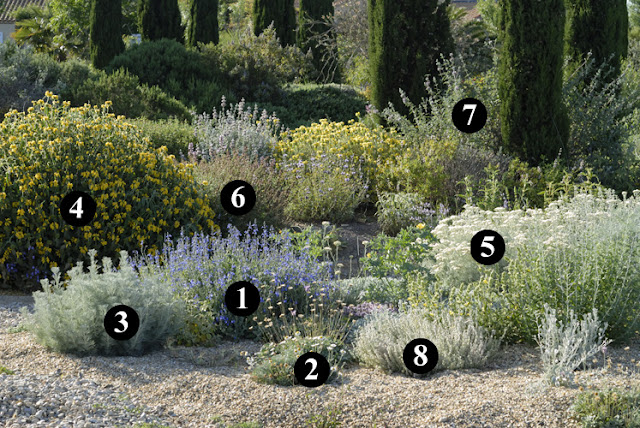Three Requirements for a 'Healing Garden'
Robert Ulrich was in the hospital with a badly broken leg.
Forced to lie flat on his back, Ulrich, an environmental psychologist, stared for hours at a too-bright ceiling light surrounded by acoustic ceiling tile.
“I remember...how much I wished I had an attractive image on the ceiling,” Ulrich recalls.
| Coleus - Jan Johnsen |
Now the director of the Center for Health Systems & Design at Texas A&M University, Ulrich produced groundbreaking research that found that viewing natural scenes in a hospital aids stress recovery by evoking positive feelings, reducing negative emotions and blocking or reducing stressful thoughts.
When test subjects viewed gardens as opposed to urban scenes, they exhibited lower alpha rates which are associated with being wakefully relaxed.
Garden by Jan Johnsen
Ulrich also found that surgical patients who had views of nature from their hospital beds had shorter post-operative stays, fewer negative comments from nurses, took less pain medication and experienced fewer minor post-operative complications than those with a view of a brick wall!
Healing begins in a garden.
All hospitals should have healing landscapes for patients to visit.
Landscape by Johnsen Landscapes & Pools
But what should a healing landscape contain?
In the United Kingdom, Maggie Keswick, a well-known English garden writer, was dying of breast cancer. Her wish was for her partner, noted landscape designer, Charles Jencks, to set up a series of cancer centers which provided a sanctuary away from clinical hospital environments.
Thereafter, a number of MAGGIE gardens were established in Scotland, Keswick’s country of birth.
In the United Kingdom, Maggie Keswick, a well-known English garden writer, was dying of breast cancer. Her wish was for her partner, noted landscape designer, Charles Jencks, to set up a series of cancer centers which provided a sanctuary away from clinical hospital environments.
Thereafter, a number of MAGGIE gardens were established in Scotland, Keswick’s country of birth.
A recent Maggie garden was developed by English designer, Dan Pearson, at Charing Cross Hospital, London. It was widely heralded but the photos show a rather uninspiring outdoor space...
so what does a healing garden need to be, specifically? Bridget Rosewell wrote about the Pearson garden in the great website, Thinkin Gardens:
so what does a healing garden need to be, specifically? Bridget Rosewell wrote about the Pearson garden in the great website, Thinkin Gardens:
"Looking round rather wild eyed and frankly astonished, I reflected on what was wrong here. I concluded that there were three things lacking. They are green, seating and a place to cry.
| Garden - Johnsen Landscapes & Pools |
Greenery carries huge symbolism of hope and in a winter garden gives structure and density. It is no accident that so many successful gardens have yew hedges [this is in England].
Seats give the opportunity to meditate, to doze and to absorb the reality of growth and renewal.
A place to cry is denied by the busyness of hospitals and the necessity of treatment. But recovery requires it and it in turn requires privacy and hidden corners."
I must admit I never thought about the 'place to cry' and hidden corners but you know it makes sense....











It sure does make sense. Loved reading this post. xo
ReplyDeleteThanks so much, Gail!
DeleteVery interesting. I hope some of the hospitals and cancer centers would follow suit and take this advice.
ReplyDeleteHi Susan, If they think it will attract more patients they will..so I want to urge everyone to ask their hospital for a healing garden.....
Delete